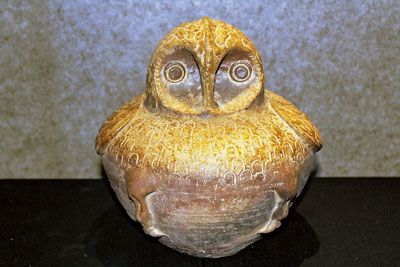
LOCATED in Longgang District, Songci Museum has become the city’s first private museum for ceramics from the Song Dynasty (960-1279).
At present, there are more than 800 exhibits at the museum, featuring a variety of pottery styles from different periods of the Song Dynasty.
Ceramics from the Song Dynasty constitute perhaps the foremost expression of ceramic art, not only for China but the world. During that period, pottery standards with regards to the art, vessel shapes, potting techniques, glazes, decorations, firing processes and aesthetic theory all combined to form a high level of excellence.
In general, pottery shapes from the Song Dynasty are simple and sedate compared to what came before and what was to follow. Likewise, the glazes tended to be monochromatic and subtle, a fluid, integral part of the form of the vessel they cover, with a depth of color and texture that invited the spectator to both touch and contemplate.
Song aesthetic sophistication was matched by an incredible inventiveness, which led to a variety of classic wares, usually associated with a specific region of China. These included the court-patronized five famous kilns: Ru, Guan, Ge, Jun and Ding wares, as well as Longquan celadon. There were also the more pedestrian Cizhou ware, Qingbai ware and the compelling varieties of Jian wares. Several of these regional ceramic wares were so valued during their day that they were used as tribute and yearly taxes for the imperial court.
Yu Xingli, founder of the museum, has been interested in Song ceramics for many years. At present, he has a collection of more than 2,000 pieces. Most of these collections are from the Song Dynasty and some are from other periods such as the Southern and Northern Dynasties (420-589).
“The 800 works at the museum were selected from my collection, and a few pre-date the Song Dynasty. They are categorized based on their different uses, time periods and regions. This way, visitors can have a better understanding of the ceramics and the values and culture behind them,” Yu said.
Some of the collections are very valuable. Among them, the most valuable one is a ceramic owl. The owl was made during the Han Dynasty (202 B.C.-A.D. 220) and was made through an ancient ceramic technique that has been lost to time. “It was very difficult to make bird-shape ceramics using ancient techniques, which has made this piece very precious,” Yu said. “Chinese people from different periods had very different beliefs when it came to owls. Some saw them as a sacred bird while others saw them as omens of evil. However, this bird is depicted as a ‘guardian,’ and this type of owl was typically used as a mortuary object to ‘guard’ the dead.”
Meanwhile, two other private museums, including one for jade and one for folk customs, are expected to open in Longgang District this year.
(Wang Yuanyuan)
Dates: Throughout the year
Hours: 9 a.m.-5 p.m.
Add: 2/F, 4 Qiaotou Building, Zhangbei Road, Zhangbei Community, Longcheng Subdistrict, Longgang District (龙岗区龙城街道嶂背社区嶂背路桥头4号二楼)
Metro: Longgang Line, Ailian Station (爱联站), Exit D
|

